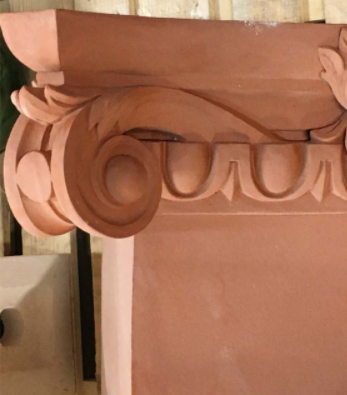TERRACOTTA
TERRACOTTA
Terracotta, literally “baked earth”, is the term used for unglazed ceramic products, usually made from red clay.
Traditionally, unrefined clay taken straight from the ground and was used for brick and tile. The manufacturing of terracotta required that the material be processed and cleaned from all impurities. This facilitated the production of the finely detailed elaborate and decorative elements of masonry and ornamental sculptural work.
In the late 19th century, hollow masonry-like blocks emerged as a versatile and inexpensive alternative to the use of stone. Structures such as balustrades, pediments, window heads, cornices and corbels – made from buff, brown and ochre clays – often look deceptively like stone and it is only upon closer inspection that they reveal their true nature. There has not been any significant change to the principles of manufacturing terracotta since the 19th century.
Plaster moulds are used in the production of terracotta or faience and in some cases individual pieces are shaped entirely by hand. Each customised piece requires a different mould.
Moulds cannot be taken directly from an original piece of terracotta to replicate it. This is due to the shrinkage factor – occurring during drying and firing – which can be between 5-12% depending on the type of clay used. Terracotta is fired at temperatures between 10000 C and 11600 C, below the vitrification point of the clay, and retains a porosity comparable to brick.
